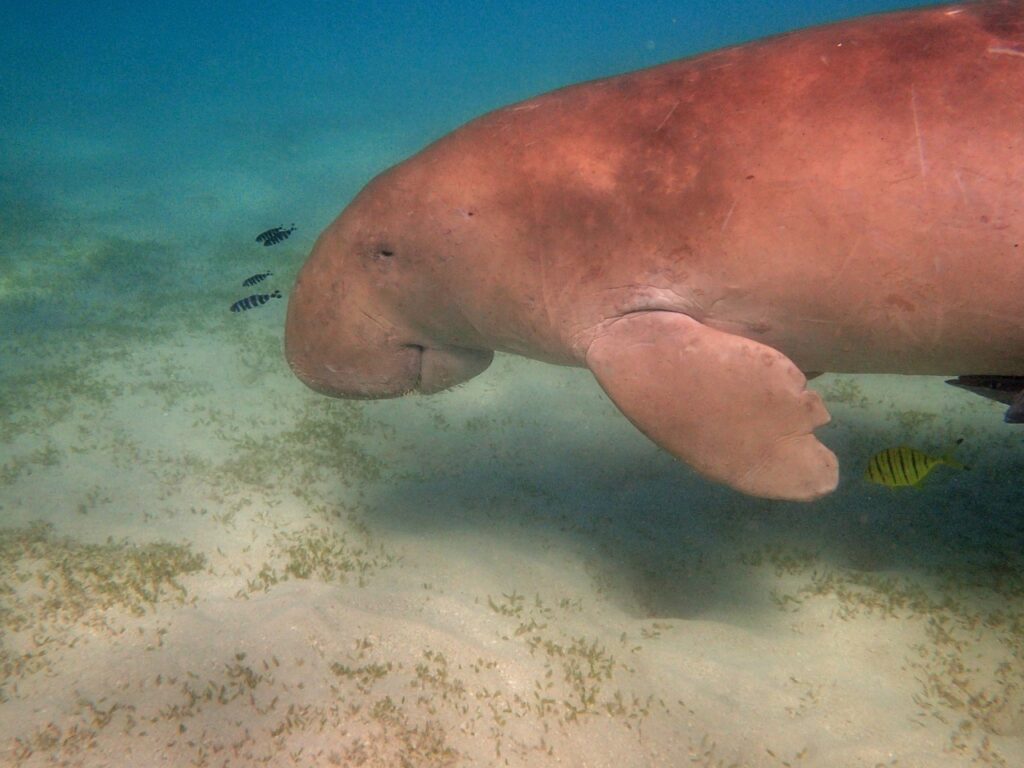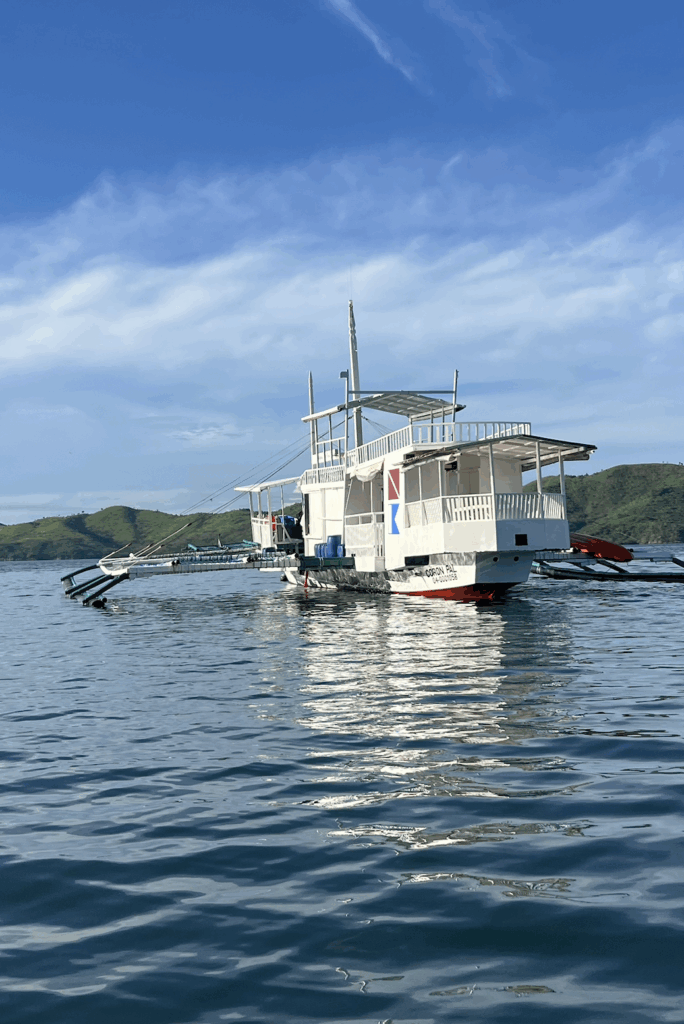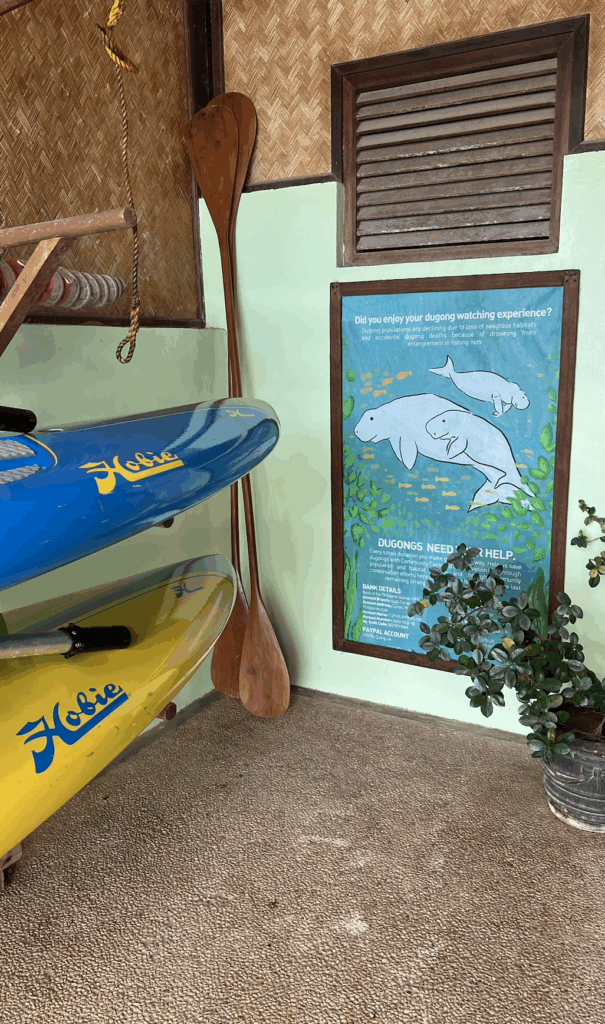I thought scuba diving with dugongs in Coron, Philippines, would be a highlight of my 8-month journey from Japan to New Zealand, traveling with just two backpacks, my scuba mask, and a list of every outdoor and wildlife adventure I’d dreamed of as a kid.
As an undergrad studying biodiversity and conservation, I would pour over the National Audubon Society’s “Guide to Marine Mammals of the World”—an encyclopedia of over 500 pages of colored illustrations, maps, and descriptions—as a hobby, convinced that one day I’d see every single one of them.
After college, I worked in marine conservation, and in the first internship of my career I cared for a rescued pantropical spotted dolphin (who had beached himself and gotten a nasty sunburn), and a long-snouted spinner dolphin (who had been attacked by a cookiecutter shark). Excitingly, we also had the opportunity to cross train in manatee rehab and research!
Dugongs are similar to manatees, and both belong to the order Sirenia (sea cows). But unlike the familiar manatee, dugongs have a fluked tail (similar to a dolphin), are only found in the Indo-Pacific, and are smaller in body size. Think of them a manatee’s exotic salt-water cousin.


They’re fascinating, shy, and deserve respect. So you can imagine my disappointment (after 3 flights, a taxi, a river boat, and a dive boat out into remote northern Coron) when I discovered that the entire experience was overcrowded, overpriced, and definitely on the less sustainable side of the ecotourism spectrum.
If you’ve been wondering how to see dugongs in Coron or are trying to find the best place to see dugongs in the Philippines, I totally understand the urge! But I also recommend doing it somewhere else.
Scuba diving with dugongs in Coron, Philippines isn’t sustainable tourism. Here’s what happened.



There are only 2 dugongs in the area
While the local guide said there is a local population of 25 dugongs, there were 2 when we arrived at a shallow, palm-fringed lagoon with at least 5 other boats. Instead of a peaceful wildlife encounter, you’re swimming in a small area with multiple boats, divers, and snorkelers all trying to see 2 animals. It felt like visiting the Mona Lisa at the Louve: craning your neck, people elbowing by you, and flailing hands with cameras blocking the view of something that’s meant to be admired in a quiet reverence.
The laws in place for protecting dugongs aren’t enough to make it truly sustainable
Dugongs are a protected animal in the Philippines, and as such, there are laws in place regulating dugong encounters. They explain the rules to you in detail on the boat, but in the water, it was still chaotic and crowded.
I appreciated that interactions were carefully controlled: 4 visitors plus 1 dive master and 1 dugong guard, with a 5-meter distance from the dugong and a 15-minute session. But there were multiple groups of both divers and snorkelers with dive masters near the dugong we dove with, and no one stopped the swimmers who were getting closer than 5 meters to the animal.
Also, as a former marine mammal behaviorist, it looked to me like the dugong was exhibiting avoidance behavior. Literally, trying to avoid us. It was swimming away and the dive master led us after it. To me, that’s the definition of chasing, i.e., harassment.
What is sustainable tourism really? Why isn’t this dugong dive sustainable?
The UN Environment Programme (UNEP) & UNWTO define sustainable tourism (including ecotourism) as “Tourism that takes full account of its current and future economic, social and environmental impacts, addressing the needs of visitors, the industry, the environment and host communities.” UNEP & UNWTO, 2005 – Making Tourism More Sustainable: A Guide for Policy Makers
And while the dive guides were indeed local, which is great, having dozens of people following an animal around their habitat is stressful for them and damaging to the environment. People were kicking coral in their efforts to race after the dugong over a reef, and I didn’t see any guides correcting that behavior.
Alternate destinations to check out if you wanted to go scuba diving with dugongs in Coron
If you were looking for where to see dugongs in the Philippines and are disappointed, don’t worry! There are so many other places where you can find sustainable dugong encounters, and likely at a better price. The price per diver in Coron to dive with dugongs was ₱10,000 per person, just for 1 dugong dive and 1 reef dive. That’s $175 per person! Ouch.
Here are other destinations to consider diving or snorkeling with dugongs:
- Australia: Calm waters and ethical tour operators make it possible to watch dugongs without disturbing them.
- Red Sea, Egypt: Dugongs are rare, but responsible snorkeling with local guides allows for respectful encounters.
- Mozambique
- Raja Ampat, Indonesia
Looking for more scuba diving or marine animal content? I’ve got you! Check out the following:
- Where to go scuba diving in Egypt (no liveaboard!): FULL GUIDE to choosing between Marsa Alam, Sharm el Shiek, Dahab, & Hurghada
- Diving with thresher sharks in Malapascua (cost breakdown, best dive shops, what to bring, etc!)
- Swimming with the world’s smallest dolphin species, the Hector’s dolphin, in New Zealand
- Contributing to manta ray conservation efforts scuba diving in Komodo, Indonesia (you can too!)
- Scuba diving the Lanai Cathedrals in Maui, Hawaii
- Searching for the world’s smallest penguin species, the little blue penguin, in New Zealand!
This blog may contain affiliate links, which means that at no cost to you, I may earn a small commission of any products sold. I only feature products that I believe in and use. Your support means the world to me and allows me to host this website!

LEAVE A COMMENT